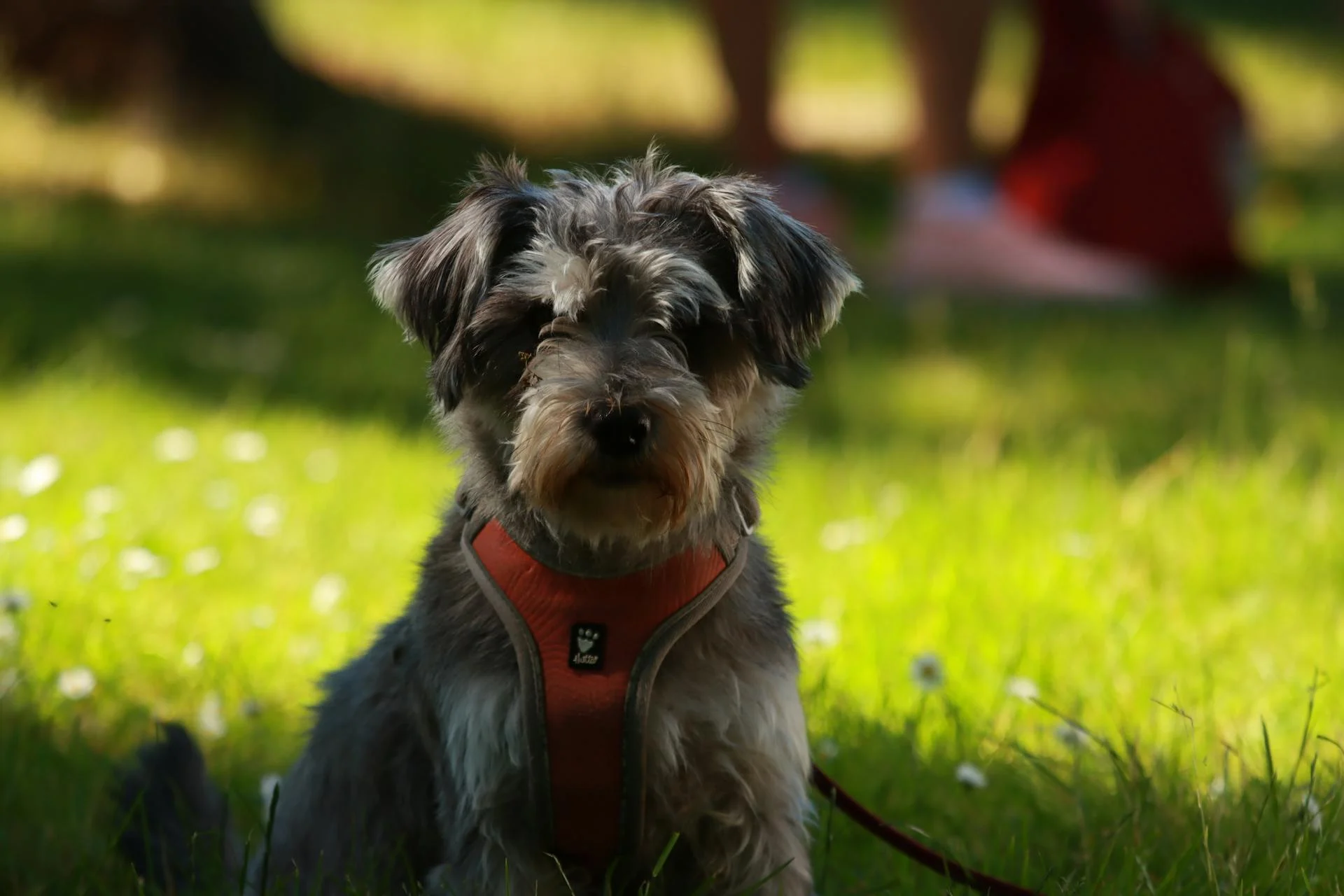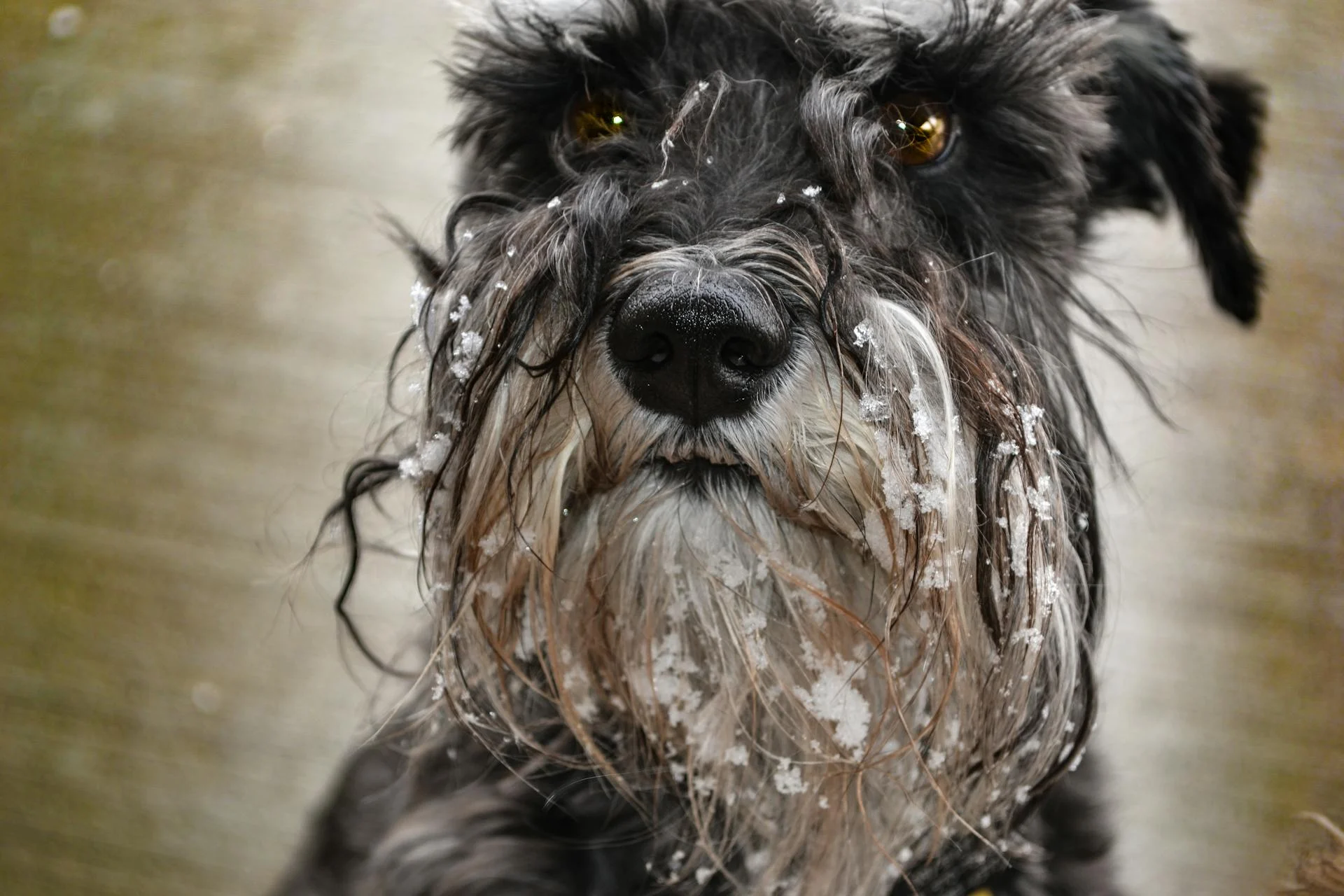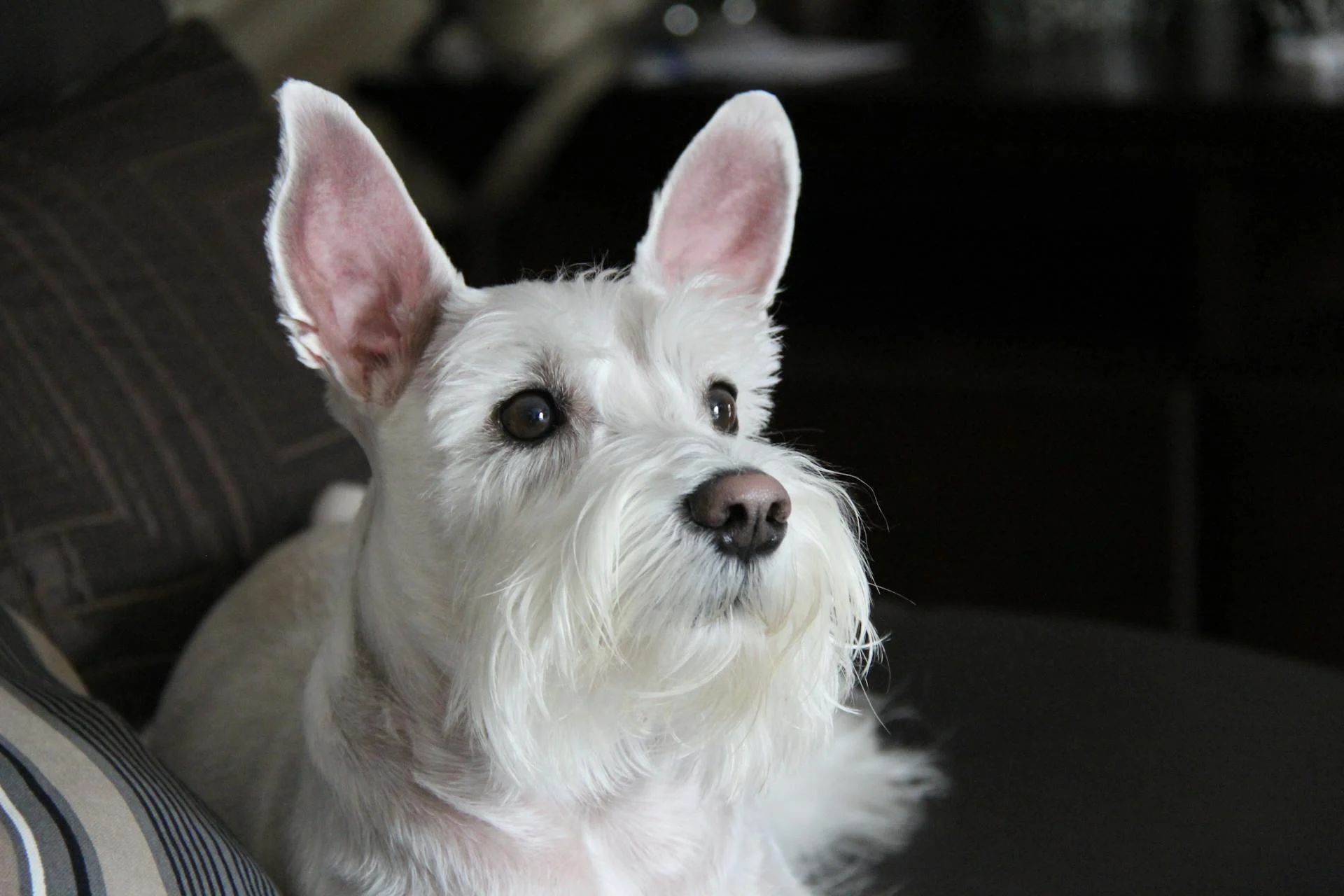
Schnauzers are intelligent dogs that require regular grooming to prevent matting and tangling of their fur. They come in three sizes: Miniature, Standard, and Giant.
Their intelligence makes them easy to train, but they can be stubborn at times. With consistent training and positive reinforcement, they can learn a wide range of commands and behaviors.
Schnauzers are generally healthy dogs, but like all breeds, they can be prone to certain health issues. Hip dysplasia and eye problems are two common issues that can affect them.
Their lifespan is typically between 12 and 14 years, but with proper care and attention, some Schnauzers have been known to live up to 16 years or more.
Explore further: Giant Schnauzer Health Issues
Temperament and Personality
Temperament and personality are crucial aspects to consider when choosing between a Schnauzer and a Schnoodle. Both breeds are known to be friendly and outgoing.
Schnauzers tend to be more protective than Poodles, which can make them great guard dogs. However, this also means they can be wary of strangers.
Poodles, on the other hand, are generally more social and love everyone they meet. This quality may not be the best for those looking for a guard dog.
A Schnoodle's temperament depends on its parents, especially the mother, and the amount of socialization it receives. The more socialization, the better behaved and more well-rounded the dog will be.
Both Schnauzers and Poodles are intelligent breeds, and their offspring, the Schnoodle, is typically smart too. They're eager to please and extremely loyal, making them easy to train.
However, they do have a bit of a stubborn streak, so consistent training and positive reinforcement are key.
Health and Grooming
Schnoodles may be susceptible to health problems from both the Miniature Schnauzer and Toy Poodle, but the genetic diversity from mixing two breeds may lower the chances of developing certain inherited diseases.
Luxating Patella is an orthopedic issue common in small breed dogs like Toy Poodles, where the kneecap slides out of its normal position.
Pancreatitis is an inflammation of the pancreas that can cause serious complications if left untreated, and Miniature Schnauzers are more prone to it than some other breeds.
Diabetes can happen in any dog breed, but Miniature Schnauzers have a higher incidence of the disease, making Schnoodles more likely to develop it as well.
Regular grooming is crucial for Schnoodles, with most having a curly or wavy coat that requires professional grooming every 4-6 weeks.
Trimming the genital area for cleanliness and brushing the teeth regularly can prevent urine stains and periodontal disease, a common issue in small dogs like Schnoodles.
Daily face washing and ear cleaning can also help prevent reddish-brown tear stains and infections.
A different take: Mini Schnauzer History
Health Basics
Schnoodles can be susceptible to various health issues due to their hybrid nature.
Luxating Patella, an orthopedic issue, is common in small breed dogs like Toy Poodles. This condition occurs when a dog's kneecap slides out of its normal position.
Pancreatitis, an inflammation of the pancreas, can cause serious complications if left untreated. Miniature Schnauzers are more prone to pancreatitis than some other breeds.
Diabetes is a possibility in Schnoodles, as both Miniature Schnauzers and Toy Poodles have a higher incidence of the disease.
A reputable breeder should be able to provide health clearances for their breeding stock. This includes certifications from health registries like the Orthopedic Foundation for Animals and Canine Eye Registry Foundation.
Here are some common health issues that may affect Schnoodles:
Schnoodle breeders should prioritize health testing their breeding dogs before mating. This ensures fewer genetic issues and a healthier litter.
Grooming Basics
Grooming is an essential part of Schnoodle care, and it's best to start early so your pup learns to accept it willingly. Schnoodles have a beautiful, curly or wavy coat that requires regular grooming to prevent mats and tangles.
Their coat looks its best with professional grooming every 4-6 weeks, but daily brushing or combing is necessary to keep it looking its best.
Here's an interesting read: Best Homemade Food for Miniature Schnauzer
Curly or wavy coats can develop reddish-brown tear stains beneath their eyes, so washing the face daily is crucial to prevent stains from setting.
Trimming the genital area is a must for cleanliness and to prevent urine stains and odors. You can either do this yourself or have the groomer shave the lower belly area.
Don't forget to trim your Schnoodle's nails every week or two, keep their ears clean and dry, and brush their teeth regularly – daily if possible, with a vet-approved pet toothpaste.
Size and Structure
Schnoodles come in different size variations, depending on the size of their parents. Both the parent breeds, Schnauzer and Poodle, have multiple size variations, resulting in a range of possibilities for size and appearance.
Their body structure is a key characteristic, with a square body and a straight back that slopes slightly from the shoulders to the tail. The head is medium in size and width, narrowing down to the muzzle.
Related reading: Mini Schnauzer Size and Weight
The muzzle is medium in shape, not as wide as the head and not as narrow as the snout of the Poodle. The eyes are medium in size, with an oval or round shape, and are usually dark brown in color.
Schnoodles have medium-sized ears that fold over in a distinct 'V' shape. Their teeth should have a scissor bite.
Here are the available size variations for Schnoodles:
Care and Maintenance
Schnoodles can be high maintenance in terms of training, grooming, and daily care. They need a lot of exercise and training, which can be a challenge since they can be stubborn.
You'll want to commit to daily exercise and training, and consider consulting a dog trainer to help with the task. Many trainers charge hundreds of dollars for weekly dog-training packages. Regular grooming is also necessary, especially for their curly coat.
You might enjoy: Giant Schnauzer Training
Care and Maintenance
Feeding your Schnoodle high-quality kibble is essential to prevent digestive issues and ensure a long, healthy life.
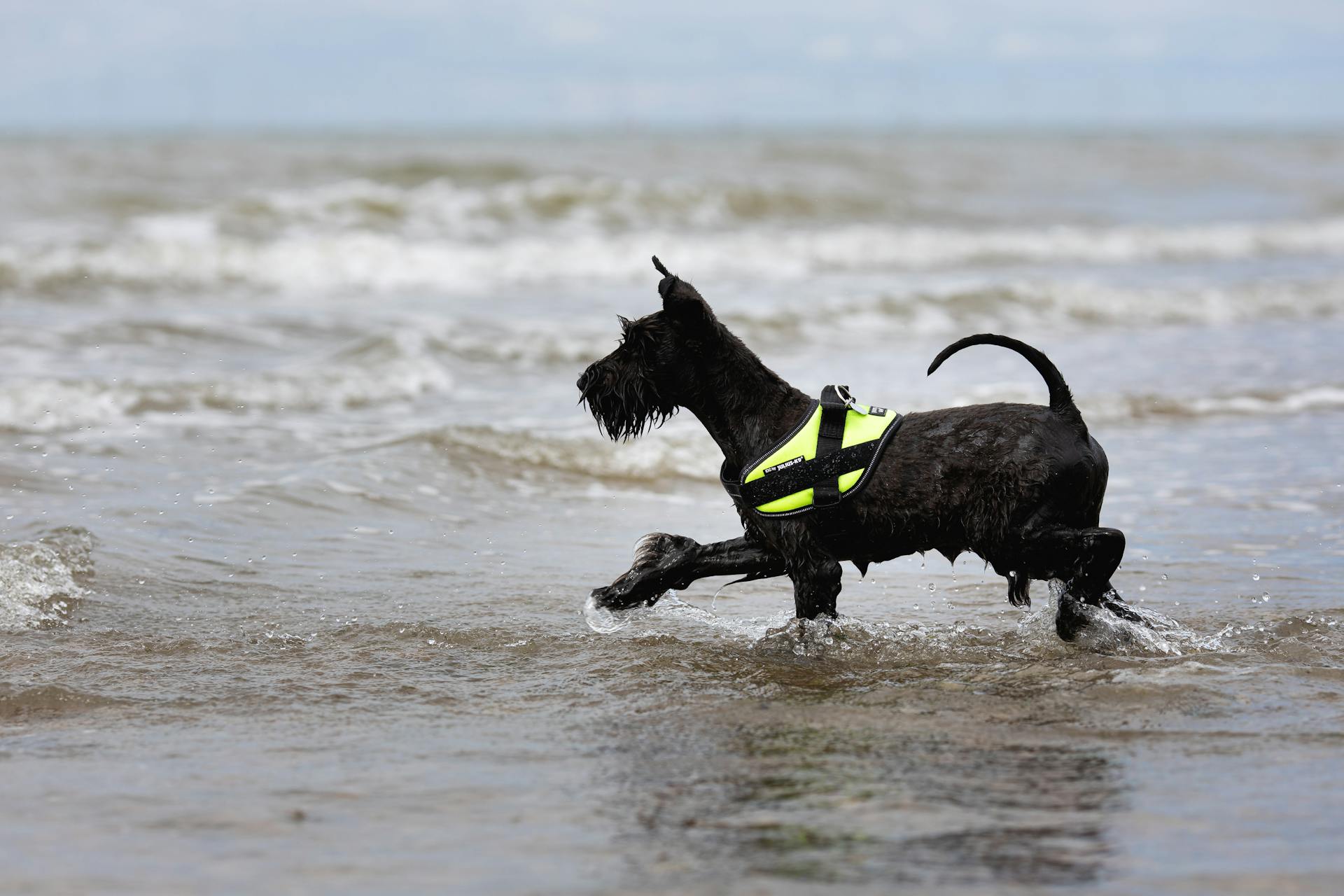
You don't need to break the bank feeding your Schnoodle, as they only require between 0.5 and 1.25 cups of kibble per day.
Don't skimp on the quality of food, as it can lead to vet bills and shorten your pup's life.
Supplementing their diet with treats is okay, but don't overdo it to prevent excess weight gain.
In the first few days after bringing your Schnoodle home, stick to the same diet they had with the breeder to prevent digestive issues.
As your Schnoodle turns one year old, you may need to switch to adult dog food or a diet recommended by the breeder, pet nutritionist, or vet.
Consult your vet before making any dietary changes, especially if your Schnoodle has allergies or special needs.
A balanced raw food diet or canned dog food can be a great option for your Schnoodle, but make sure it's high-quality and contains the right proportion of proteins, healthy fats, and vitamins and minerals.
Grain-free, gluten-free, and raw foods may be suitable for Schnoodles with allergies, but consult your vet before making any changes.
If this caught your attention, see: Schnauzer Allergies
Care and Maintenance
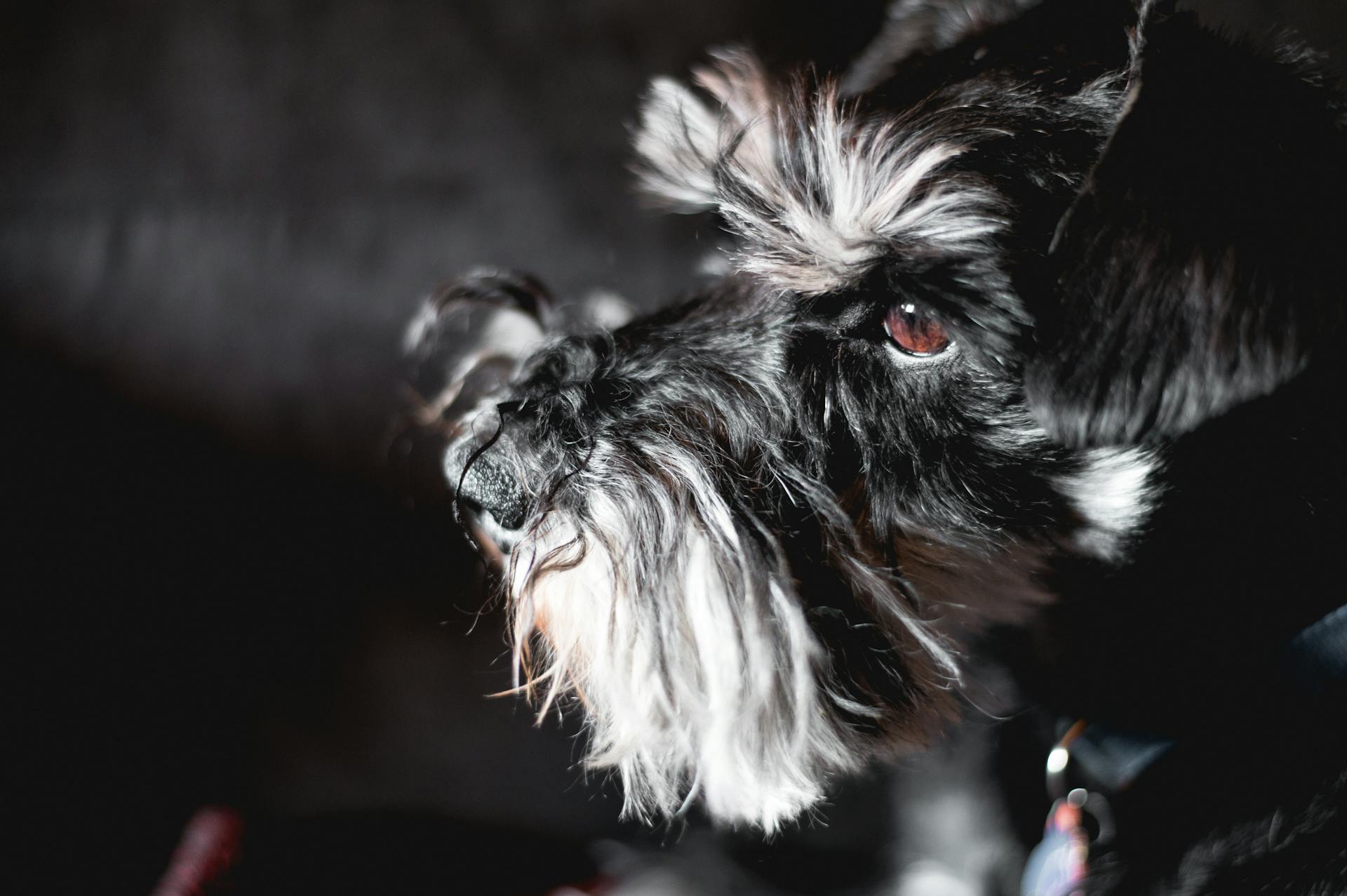
Schnoodles need daily exercise of 30-45 minutes, which can be divided into 2-3 shorter sessions per day.
To avoid destructive boredom behaviors, take your Schnoodle out every day, as they have tons of energy.
Their small size tempers their high energy, making it perfectly fine to get a Schnoodle even if you live in an apartment or small home.
Local dog parks can be an option for social Schnoodles to play with other vaccinated dogs of similar size.
Some Schnoodles also enjoy swimming, which can be a fun and low-impact exercise option.
For another approach, see: Schnoodle Sizes
Are High Maintenance?
Schnoodles can be considered high maintenance due to their energetic nature, requiring daily exercise and training.
They need a fair amount of grooming, which may involve regular trips to a professional groomer for curly coat trims.
Training can be a challenge, as Schnoodles can be stubborn, making it beneficial to consult a dog trainer.
Weekly dog-training packages can cost hundreds of dollars, so it's essential to factor this into your budget.
Their high energy levels also mean they require regular mental and physical stimulation to prevent boredom and destructive behavior.
On a similar theme: High Content Wolfdog
Allergies and Shedding
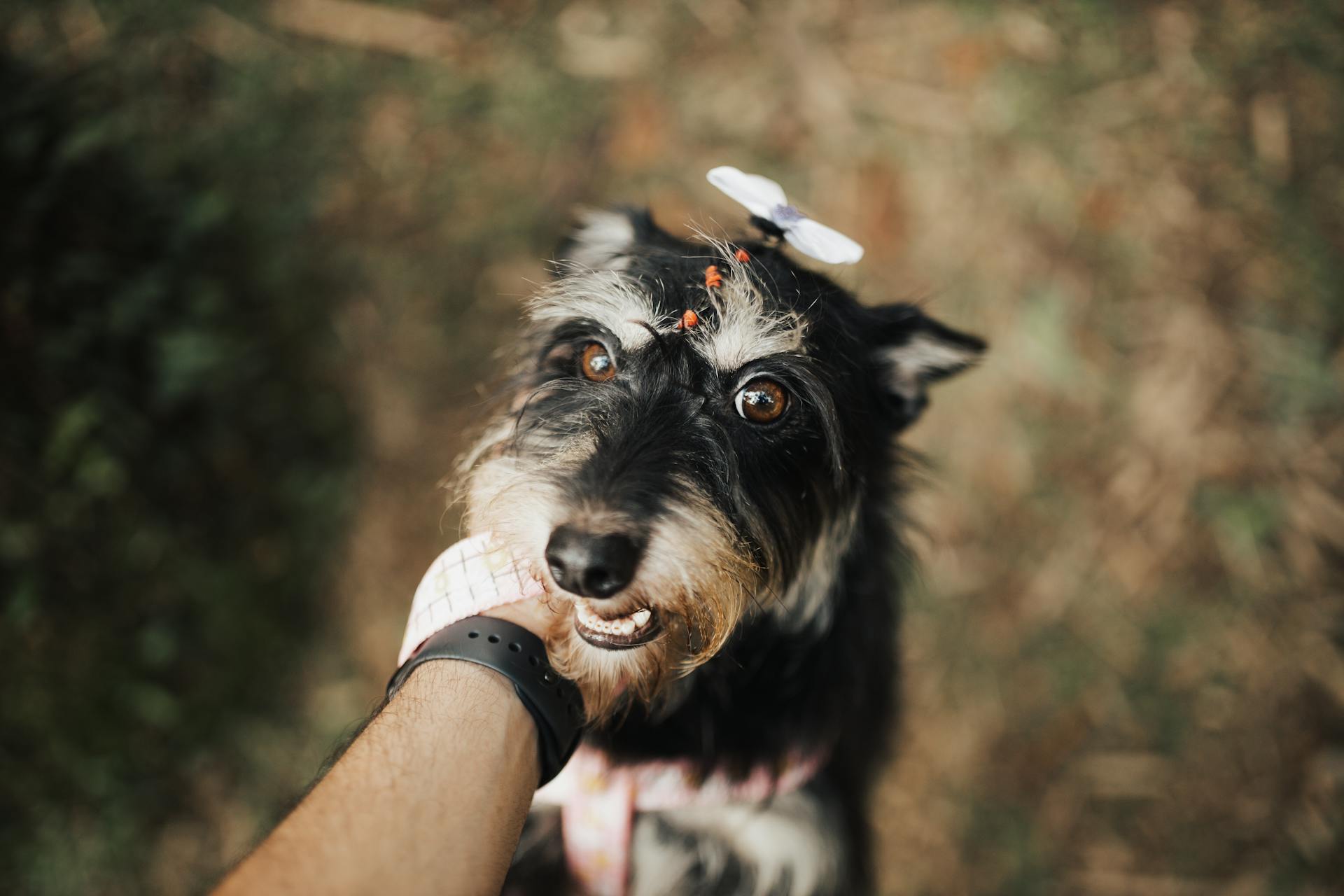
Schnoodles are often considered a good option for people with allergies because they inherit the hypoallergenic trait from their parent breeds, the Schnauzer and the Poodle.
However, being allergic to pets has nothing to do with shedding, but rather with pet dander, which is a different story altogether.
While Schnoodles don't shed excessively, you will still need to clean hair off your clothes and furniture.
You might like: Pictures of Schnoodle Puppies
Hypoallergenic with Shedding
Some breeds are considered hypoallergenic, but that doesn't mean they don't shed at all.
Schnoodles, for example, are a mix of Schnauzers and Poodles, both of which are hypoallergenic breeds. They don't shed excessively, but you'll still need to clean hair off your clothes and furniture.
Being allergic to pets has everything to do with pet dander, not the shedding of hair.
Intriguing read: Are Schnauzers Hypoallergenic Dogs
Do Shed
Shedding is a natural process for many animals, but it can be a major contributor to allergies in humans.
Dogs, for example, shed their fur seasonally, with some breeds shedding more heavily than others.
Cat dander is a common allergen that can be found in the air, on surfaces, and even in the fur of cats.
In fact, cat dander is one of the most common triggers for allergies in humans.
Some people may experience severe reactions to dog or cat dander, while others may only experience mild symptoms.
The amount of dander produced by an animal can vary greatly depending on the breed and individual animal.
Cost and Ownership
Owning a Schnoodle can be a significant investment. The initial price of a Schnoodle can range from $1500 to $4000, depending on various factors.
You can also adopt a Schnoodle from an animal rescue shelter for around $500. However, you'll still need to factor in ongoing costs like food, training, vaccinations, and grooming.
These costs can add up quickly, with some Schnoodle owners spending up to $20,000 over the dog's lifetime.
What Is the Average Price of?
The average price of a Schnoodle can vary depending on several factors, but on average, they cost between $2,000 to $3,000.
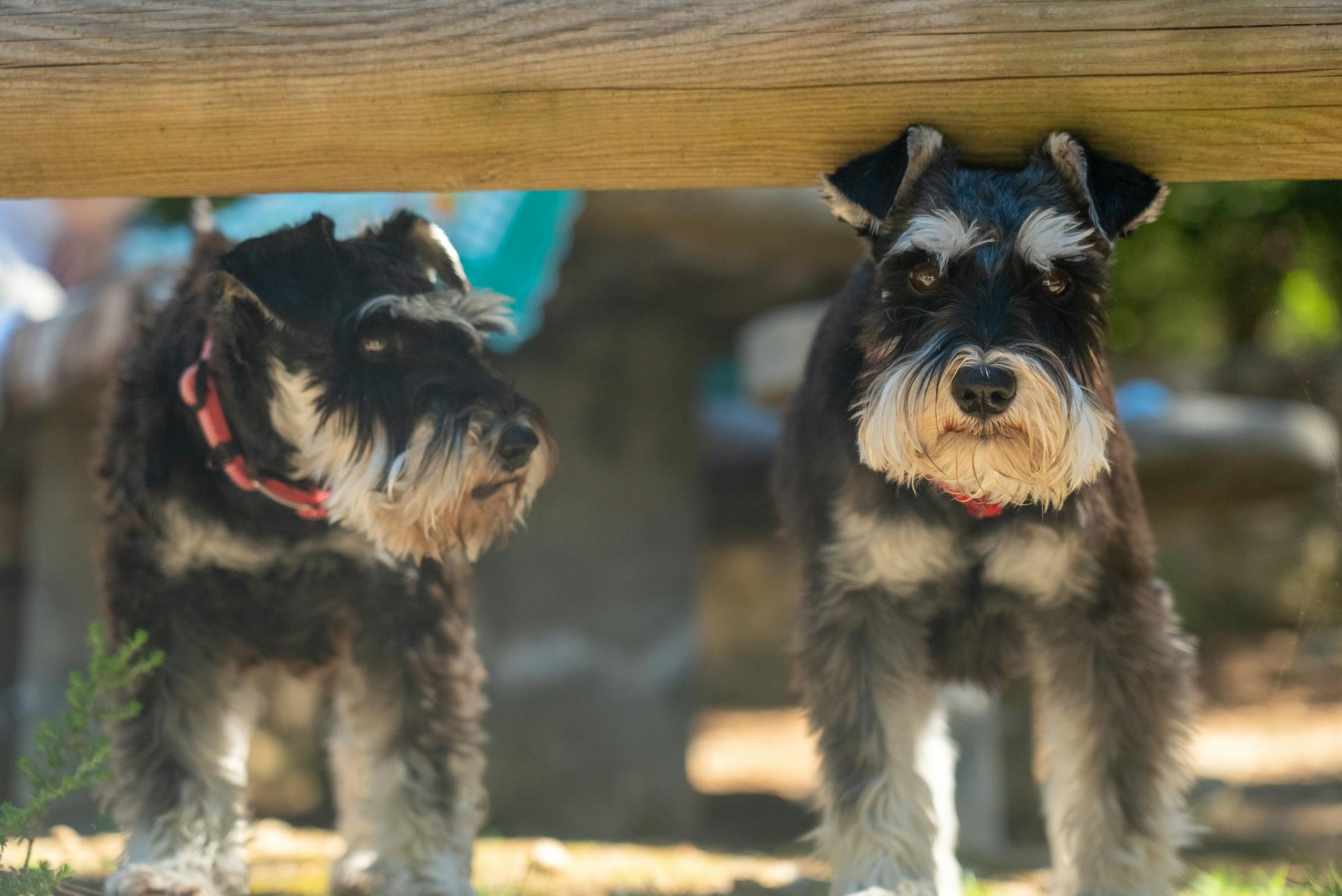
If you're considering adopting a Schnoodle, you can expect to pay around $500 from a rescue group.
These designer breeds are high-maintenance, and over their lifetime, you can expect to pay anywhere between $15,000 to $20,000.
You'll also need to factor in the initial price of your Schnoodle, which can range from $1,500 to $4,000, depending on size, breeder reputation, and other factors.
Owning a Dog
Owning a dog requires basic care requirements, just like owning any other dog, but there are some specific needs to be aware of.
You'll need to consider the cost of food, which can vary depending on the size and breed of your dog. Owning a large breed dog, like a Schnoodle, will require more food and therefore more money.
Regular grooming is also essential, as some breeds, including Schnoodles, require regular brushing to prevent matting and tangling of their fur.
Spaying or neutering your dog is a crucial aspect of responsible dog ownership, and can help reduce the risk of certain health issues and prevent unwanted breeding.
Every dog needs regular exercise, whether it's a short walk or a longer run, to stay happy and healthy. Owning a dog means committing to regular exercise routines with your pet.
Recommended read: Half Wolf Half Husky Breed
Family and Lifestyle
Schnauzers and Schnoodles can make great family dogs, but they do require some extra attention. They have a friendly temperament and loving demeanor, making them perfect for families who want a loyal companion.
However, it's essential to consider the size of your Schnoodle, as they can be small and may get hurt by accidental bumps from small kids as they learn to walk.
If you live a busy life, be prepared to spend quality time with your Schnoodle, as they need socialization to behave well outside the home.
Good Family Dogs?
If you're looking for a dog that's great with families, the Schnoodle is a top contender. They're known for their friendly temperament and loving demeanor.
However, it's essential to be mindful of their small size, especially around young children who may accidentally hurt them as they learn to walk.
To ensure a smooth family life, make sure you have plenty of time to spend with your Schnoodle, as they require socialization to behave well outside the home.
They can still accompany you to events, but it's crucial to start early and be consistent with their training.
Good for First-Time Owners?
Meeting the parents of your Schnoodle puppy is crucial to ensure they have the temperament you're looking for.
A Schnoodle requires weekly grooming, including a deep brush and comb-through to prevent matting.
You'll also need to take your Schnoodle to the groomers every 6 weeks for a trim, nail care, and ear cleaning.
This breed can make a wonderful family dog, but first-time dog owners should be aware of the grooming needs.
Frequently Asked Questions
Are schnoodles calm dogs?
Yes, schnoodles are known for their calm demeanor, making them a great choice for families and first-time dog owners. Their calm nature is one of the reasons they're often described as "teddy bear" dogs.
What is the lifespan of a Schnoodle?
Schnoodles typically live 10-16 years, with smaller ones often outliving their larger counterparts
Featured Images: pexels.com
